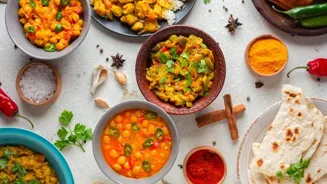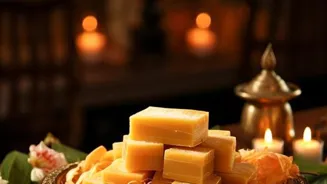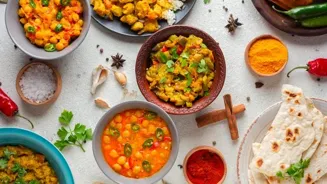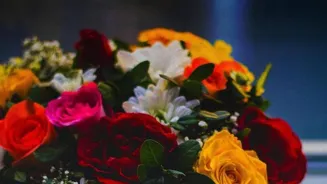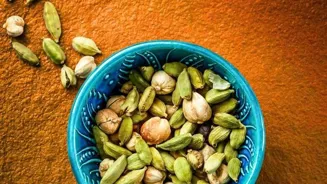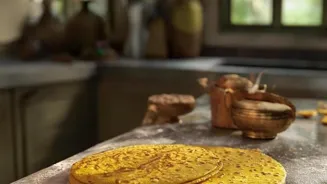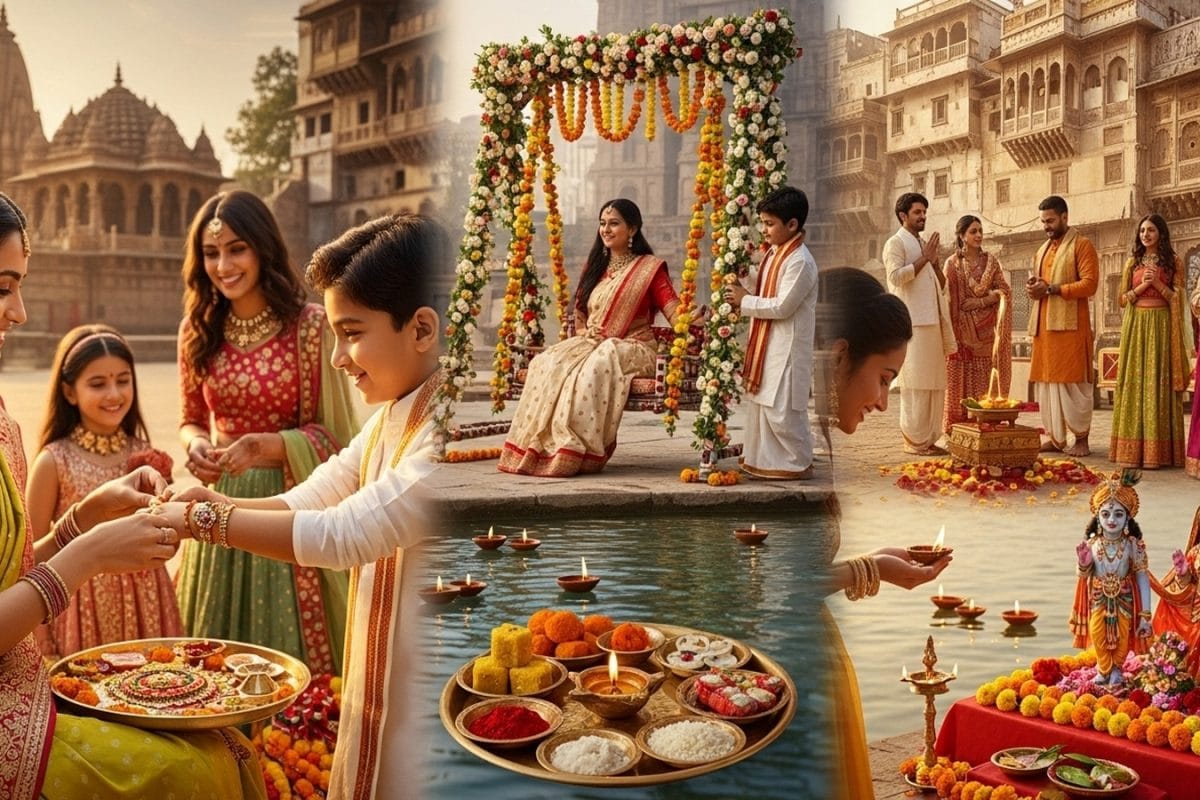Dive into India's kaleidoscopic festivals, a vibrant tapestry of culture and traditions. Explore 7 captivating insights!
India, a land of vibrant colours and age-old traditions, is renowned for its kaleidoscopic
festivals. These celebrations, deeply woven into the fabric of Indian society, offer a mesmerising glimpse into the nation's rich cultural heritage.
From North to South, East to West, each festival narrates a unique story, reflecting the customs, beliefs, and history of its region. Let us embark on a journey to explore seven intriguing insights into India's diverse festivals.
Indian festivals showcase cultural unity, diversity, and joy
Festivals in India are not just mere holidays, but they are living embodiments of the country's syncretic culture. They showcase the harmonious blend of various religions, languages, and customs that have coexisted for centuries.
Take, for instance, Diwali, the festival of lights, celebrated by Hindus, Sikhs, and Jains alike. While the legends and rituals may slightly differ, the underlying message of good triumphing over evil and light overcoming darkness remains universal.
Similarly, Holi, the festival of colours, transcends religious boundaries and is joyously celebrated by people of all faiths, welcoming the arrival of Spring with playful abandon. This inclusive spirit is a testament to India's ethos of unity in diversity.
The festivals also provide a social platform, where barriers break, and people from different backgrounds come together to share the joy.
Indian festivals celebrate mythology, deities, and values, enriching cultural narratives
Many Indian festivals are deeply rooted in mythology and ancient scriptures. They often commemorate significant events from the epics like the Ramayana and the Mahabharata, or honour deities from the Hindu pantheon.
Dussehra, for example, celebrates the victory of Lord Rama over the demon king Ravana, symbolizing the triumph of righteousness over wickedness. Ganesh Chaturthi marks the birth of Lord Ganesha, the elephant-headed god of wisdom and prosperity.
Each festival has its own unique story, passed down through generations, enriching the cultural narrative and inspiring people with values of courage, devotion, and compassion. The rituals involved are also symbolic and meaningful.
For instance, lighting lamps during Diwali signifies dispelling ignorance and bringing knowledge into our lives.
Indian festivals showcase rich cultural diversity
The sheer diversity of Indian festivals is truly astonishing. Every region has its own set of unique celebrations, reflecting its distinctive cultural identity.
In Kerala, Onam is celebrated with elaborate feasts, boat races, and floral decorations, commemorating the return of the legendary King Mahabali.
In West Bengal, Durga Puja is a grand affair, marked by elaborate pandals (temporary structures), artistic idols, and cultural performances, honouring the goddess Durga. In Tamil Nadu, Pongal is a harvest festival, celebrating the bounty of nature with thanksgiving rituals and traditional games.
These regional variations add to the richness and vibrancy of India's festival landscape, showcasing the country's incredible cultural tapestry.
Indian festivals celebrate art, music, dance through vibrant traditions
Indian festivals are not just about religious rituals and mythological tales; they are also a vibrant showcase of art, music, and dance. During festivals, streets come alive with colourful processions, traditional music performances, and folk dances.
Diwali brings with it the dazzling display of fireworks and the intricate art of rangoli (colourful patterns created on the floor). Navratri is celebrated with energetic Garba and Dandiya dances, where people twirl and sway to the rhythmic beats of traditional music.
These art forms are an integral part of the festival experience, adding to the festive atmosphere and providing a platform for artists to showcase their talents. The music and dance forms are often passed down through families, preserving the cultural heritage for generations to come.
Festivals preserve traditional crafts through artisan showcases
Festivals play a crucial role in preserving and promoting traditional crafts and skills. Many festivals provide a platform for artisans and craftsmen to display and sell their wares, keeping traditional art forms alive.
During Diwali, handcrafted diyas (oil lamps) and decorative items are in high demand. During Durga Puja, artisans create elaborate idols of the goddess Durga, showcasing their artistic skills.
During Holi, natural colours made from flowers and plants are used, reviving traditional dyeing techniques. These festivals not only provide economic opportunities for artisans but also help in preserving traditional crafts and skills that might otherwise be lost in the face of modernization.
The artisans take pride in their work and contribute to the overall cultural richness of the festivals.
Indian festivals foster community, harmony, and cultural values
Indian festivals are not just about celebrations; they also emphasize the importance of community and social harmony. Festivals bring people together, fostering a sense of belonging and shared identity. During festivals, families and friends gather, share experiences, and strengthen their bonds.
Neighbourhoods come alive with collective rituals, processions, and cultural programs. People volunteer their time and resources to organize and participate in the festivities.
This spirit of community and social harmony is a defining characteristic of Indian festivals, promoting cooperation, empathy, and mutual respect. This strengthens the social fabric of the society and reinforces the cultural values.
AI Generated Content. Glance/InMobi shall have no liability for the content

